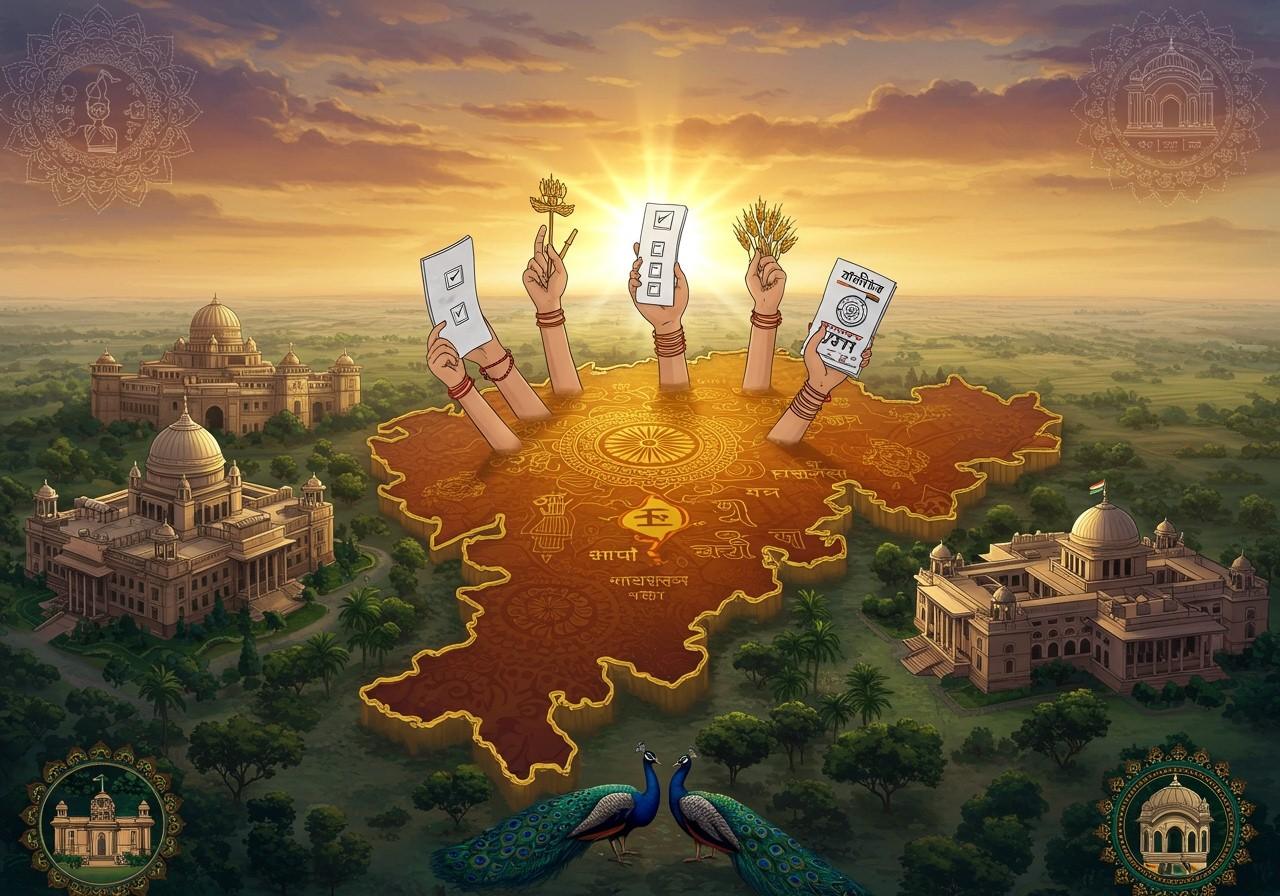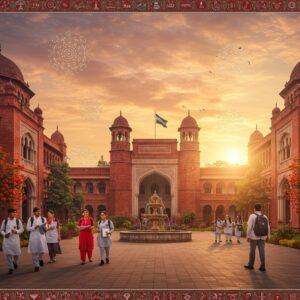
Haryana, a northern Indian state, is renowned for its rich cultural heritage and significant role in India’s history. This article delves into Haryana’s political landscape, encompassing its formation, government, prominent political figures, and governance structure. We’ll explore how historical events and political developments have molded Haryana’s current political scenario.
Formation of Haryana
Haryana emerged as a distinct state on November 1, 1966, following the reorganization of Punjab. The demand for a separate state stemmed from linguistic and cultural differences. The States Reorganization Commission and the Punjab Reorganisation Act, 1966, played pivotal roles in this process. Leaders and movements advocating for statehood made substantial contributions. The newly formed state encountered initial hurdles but diligently pursued political stability.
Political Parties and Government in Haryana
Haryana’s political landscape has been shaped by major parties such as the Indian National Congress (INC) and the Bharatiya Janata Party (BJP). The INC wielded considerable influence in the early years. Currently, the BJP holds a dominant position in Haryana politics. Regional parties like the Indian National Lok Dal (INLD) and Jannayak Janta Party (JJP) have also gained prominence. Coalition governments have impacted policy-making and governance, with successive administrations introducing key legislative reforms.
As of October 2019, the BJP formed a coalition government with the JJP, with Manohar Lal Khattar as Chief Minister and Dushyant Chautala as Deputy Chief Minister. The next assembly elections are scheduled for October 5, 2024, with major parties including BJP, INC, AAP, INLD, BSP, and JJP vying for seats. Key electoral battles and candidates are already influencing the political discourse.
Key Political Figures in Haryana
Several prominent figures have left their mark on Haryana politics. Bhupinder Singh Hooda, a senior Congress leader and former Chief Minister, has made significant contributions. Manohar Lal Khattar, the current Chief Minister from the BJP, has spearheaded various initiatives. Chaudhary Devi Lal, a veteran leader and former Deputy Prime Minister, exerted considerable influence. Om Prakash Chautala played a vital role in regional politics. Emerging leaders like Dushyant Chautala are shaping Haryana’s political future.
Governance and Administrative Structure
The Governor, currently Bandaru Dattatreya, serves as the ceremonial head of Haryana. The Chief Minister holds executive powers and oversees state administration. The Haryana Legislative Assembly plays a crucial role in the legislative process. Key ministries and departments implement developmental agendas. Local government bodies like Panchayats and Municipalities contribute to grassroots governance. Major policy initiatives and development programs are undertaken by the state government.
Elections in Haryana
Haryana’s electoral history encompasses significant election outcomes since its formation. Voter demographics play a crucial role in influencing election results. Key issues in election campaigns often revolve around agriculture, employment, and infrastructure development. The Election Commission of India ensures free and fair elections. Electoral alliances and coalition politics significantly impact election outcomes. Recent election results offer valuable insights into future political prospects in Haryana.
Conclusion
Understanding Haryana’s political landscape provides insights into the state’s journey and current dynamics. The formation of Haryana as a separate state marked a significant turning point, driven by cultural and linguistic factors. Major political parties like the INC and BJP, alongside regional parties, have played crucial roles in shaping the state’s governance. Key figures like Bhupinder Singh Hooda, Manohar Lal Khattar, Chaudhary Devi Lal, and emerging leaders like Dushyant Chautala have influenced Haryana’s political trajectory. The governance structure, including the roles of the Governor, Chief Minister, and legislative bodies, ensures the state’s development and administration. Elections in Haryana are pivotal events that reflect public sentiment and shape the political future.
For those interested in traditional elements of Haryanvi culture, Poojn.in offers a variety of products, including fresh paddy seeds, often used in traditional ceremonies and rituals. Exploring these offerings can enhance your understanding of the cultural context of Haryana’s political landscape.
FAQs about Haryana’s Political Landscape
When was Haryana established? Haryana was formed on November 1, 1966.
Which political party currently governs Haryana? As of October 5, 2024, the BJP leads the coalition government in Haryana.
Who is the Governor of Haryana? Bandaru Dattatreya is the current Governor of Haryana.
What are the prominent political parties in Haryana? Key parties include BJP, INC, JJP, AAP, INLD, and BSP.
How often does Haryana hold elections? Elections for the state legislative assembly occur every five years.
What are the Chief Minister’s responsibilities? The Chief Minister leads the state government, overseeing policy execution and administration.
How many seats constitute Haryana’s legislative assembly? The assembly comprises 90 seats.
What are the key issues during Haryana’s elections? Important election issues often include economic progress, agriculture, infrastructure, and social welfare.
Looking for items related to Haryanvi culture? Poojn.in offers traditional goods like black sesame seeds, commonly used in regional practices.


